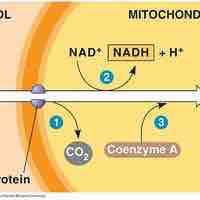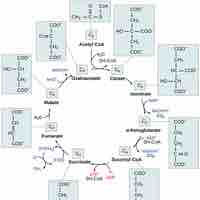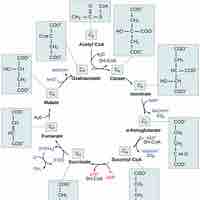Section 3
Oxidation of Pyruvate and the Citric Acid Cycle
Book
Version 32
By Boundless
By Boundless
Boundless Biology
Biology
by Boundless
3 concepts

Breakdown of Pyruvate
After glycolysis, pyruvate is converted into acetyl CoA in order to enter the citric acid cycle.

Acetyl CoA to CO2
The acetyl carbons of acetyl CoA are released as carbon dioxide in the citric acid cycle.

Citric Acid Cycle
The citric acid cycle is a series of reactions that produces two carbon dioxide molecules, one GTP/ATP, and reduced forms of NADH and FADH2.